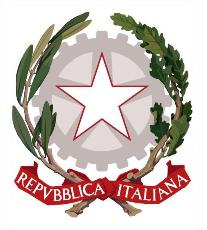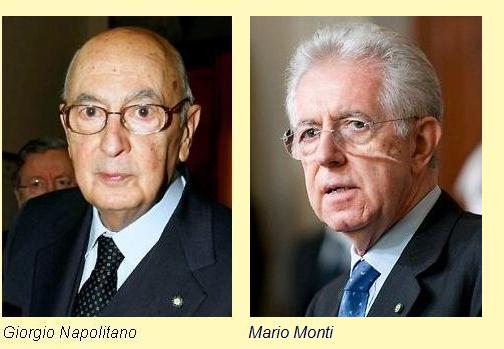

ITALIAN REPUBLIC
Official name: Repubblica Italiana (Italian Republic)
• Location: Western Europe
• International organisations: Council of Europe, European Union, Group of Eight, Group of Twenty,
North Atlantic
Treaty Organisation, Organisation for Economic Co-operation and Development,
Organisation for Security and Co-operation in Europe, United Nations,
Western European Union, World Trade Organisation
• Borders: Austria, France, San Marino, Slovenia, Switzerland, Vatican City State
• Coastline: Adriatic Sea, Mediterranean Sea
• Land area: 301,230 Km2
• Population: 60,200,000
• Annual GDP (PPP) per capita: US$30,300 (2009 CIA estimate). World ranking: 31
• Ethnicity: The population is almost entirely Italian. There is a
German minority in Trentino-Alto Adige (South Tyrol), a French
minority in Valle d'Aosta and a Slovene minority in Trieste-Gorizia.
There has been an influx of Abanian and North African immigrants in
recent years.
• Languages: Italian is the national language, and is used everywhere
except in the three border regions mentioned above.
• Religion: Italy has been historically almost entirely Catholic
Christian, but religious practice has declined sharply in the postwar
period. Under the 1985 revised agreement between Italy and the Vatican,
Catholicism is no longer the state religion. There are small Jewish
and Moslem minorities.
• Form of government: Parliamentary democratic republic. Italy is
divided into 20 regions which elect their own legislatures, but is
not a true federation.
• Capital: Roma (Rome)
• Constitution: The Constitution of the Italian Republic came into effect
on 1 January 1948
• Head of state: The President, elected for a seven-year term by an electoral college
consisting of both houses of the legislature and 58 regional representatives. President
Giorgio Napolitano
assumed office on 15 May 2006. The President's functions are largely ceremonial.
• Head of government: The Prime Minister, appointed by the President. The Prime
Minister is the leader of the largest party or coalition in the legislature and
is accountable to it.

• Legislature: The Parliament (Parlamento)
is a bicameral legislature. The lower house, the Chamber of Deputies (Camera dei
Deputati), has 630 members, elected for five-year terms by proportional
representation from the regions. The Senate of the Republic (Senato della Repubblica)
has 326 members elected for five-year terms by proportional representation from
the regions. There are 11 senators for life.
• Electoral authority: Italian national elections are conducted by the
Department of Internal Affairs of the Interior
Ministry.
• Freedom House 2011 rating: Political Rights 1, Civil Liberties 2
• Transparency International Corruption Index: 39% (67 of 178 countries rated)
• Reporters Without Borders Press Freedom 2010 Index: 85% (49 of 178 countries rated)
• Heritage Foundation Economic Freedom 2010 Index: 60.3% (87 of 179 countries rated)
Political history
Until the 19th century Italy was, as Metternich famously said, only a geographical
expression. But the French Revolution introduced liberal and nationalist ideas into
Italy, and a movement for national unification
developed which achieved its objective when the Kingdom of Italy
was created in 1861. The new kingdom was a parliamentary democracy under the leadership
of the Kings of Piedmont.
World War I and its aftermath produced a crisis in Italian politics. In
1919 and 1920 the Communists came close to launching a revolution, and a movement of the
extreme right, fascism, was mobilised in response. With parliamentary institutions
discredited, the fascist leader Benito
Mussolini was able to "march on Rome" in October 1922, and soon established a
dictatorship.
In 1940 Mussolini foolishly entered the Second World War on Germany's side, and by
1943 the Allies had invaded Italy and he was overthrown. The end of the war saw the
monarchy disgraced for having collaborated with Mussolini, and Italy became a republic
in 1946. The Communist Party was very powerful, but was successfully kept from power
by the organisation of a broad-based, progressive Christian Democratic party, led by
Alcide de Gasperi.
The dominance of the left by the Communists, a situation unique in Europe, meant
that there was no acceptable alternative government to the Christian Democrats for more
than 40 years, which inevitably led in time to complacency and corruption. The fall of the
Soviet Union produced a revolution in Italian politics. The Communist Party abandoned
Communism, changed its name and suffered a major split. The Christian Democrats, no
longer a bulwark against Communism, also fell apart.
Today the dominant force in Italian politics is the
People of Freedom, an alliance
of the right led by the media magnate Silvio Berlusconi, which was
formed in 2007 when Berlusconi's party, the populist Forwards Italy, merged with the
ex-neo-fascist National Alliance. People of Freedom is allied with
the regionalist Northern League and several smaller
parties.

Following the demise of the Communist and Socialist parties the Italian left went
through several permutations, but since 2007 it has been united in the
Democratic Party (PD), which absorbed the former
Democratic Party of the Left (PDS) and smaller left-wing parties. The
Union of the Centre (UdC) represents the left wing of the
former Christian Democratic Party.
Communist Refoundation Party represents the fading tradition of Italian communism.
Italy's profusion of political parties is the product of the system of
proportional representation. This was replaced in 1991 by a "mixed" system of single-
member and proportional repesentation, but the existence of some proportionality
kept the minor parties alive. In 2005 Berlusconi brought back the old system,
apparently in the expectation of losing the 2006 elections. His motive was to ensure
that the next government would be weak and unstable so that he could return to power.
This was a sound calculation. Romano Prodi's centre-left government was
uninspiring and short-lived, and in April 2008 Berlusconi had a convincing election
victory over the PD's Walter Veltroni. The election was notable for eliminating the
communists from the Italian parliament for the first time since 1945.
Despite Berlusconi's well-deserved reputation for corruption and a string of sex scandals,
his swashbuckling style made him popular with Italian voters, and he seemed untouchable until the
European debt crisis struck in 2010. During 2011 his parliametary support crumbled, and
EU governments and central bankers made it clear they had no confidence is his ability to reduce
Italy's massive debt. In November 2011 he was forced out, and a non-party government led by economist
and former EU Commissioner
Mario Monti was formed to deal with the crisis.
Freedom House's 2011
report on Italy
says: "Italy is an electoral democracy... Corruption remains an issue in politics despite the
changes in government over the past decade... Berlusconi has faced numerous corruption charges over
the years, but has never been convicted... Freedoms of speech and of the press are constitutionally
guaranteed. However, Berlusconi controls up to 90 percent of the country’s broadcast media through
state-owned outlets and his own private media holdings... Italians are free to assemble and form
social and political associations, and around 35 percent of the workforce is unionised...
The judicial system is undermined by long trial delays and the influence of organised crime."
Updated November 2011
|


